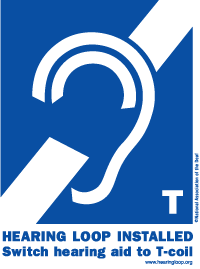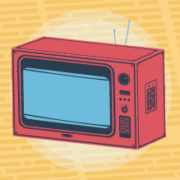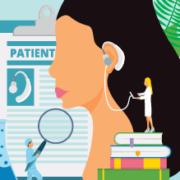Get in the Loop | Hearing Loops & How To Utilize Them
Get in the Loop
Have you — or has someone you know — ever gone to a play, seminar, house of worship, or musical performance, optimized your hearing device settings, and still had trouble hearing?
Why does this happen?
Hearing in Public Spaces
When you listen to a live speech, classroom lesson, classical guitarist, or clergyperson, your hearing device uses a built-in microphone to capture the sound waves in the room. The sound is processed according to how your devices are programmed and then sent to your ear.
No matter how well your hearing device matches your hearing needs, however, other things in the room impact the sound waves before they reach your hearing device — for example, any background noise and the acoustics of the room.
What if there was a way to avoid all that impact?
There is.
The Hearing Loop
More and more organizations are installing something called a hearing loop into their performance halls, seminar rooms, and worship spaces. In addition to the usual sound system, these venues use a hearing loop to generate sound information using a magnetic field.
Let’s see how it works:
- A sound source, such as the headset used by a performer or seminar speaker, sends sounds to an amplifier.
- The amplifier sends a current through wires that surround the room along the floor, ceiling, or both.
- The wires generate a magnetic field (rather than sound waves).
- Your hearing aid picks up the magnetic signal using a tiny wire called a telecoil — most hearing aids and cochlear implants today have one already, and if not, it can likely be programmed into your devices.
- Your device processes the signal from the telecoil and converts it to sound.
- The sound is sent to your ear canal.
Benefits of a Hearing Loop
Knowing how a loop works doesn’t reveal much about why you would want to use one, though. Here are just some of the benefits:
Sound quality. By far the greatest benefit is sound quality. The magnetic signal received by the telecoil isn’t affected by things such as background noise and the acoustics of the room, so speech and music sound clearer.
Ease of use. To enjoy improved sound quality, simply switch your hearing device’s setting so it’s using the telecoil rather than the microphone to receive sound. You don’t have to build extra time into your schedule to pick up and return special equipment.
Versatility. Enjoy seamless hearing capabilities across an array of environments, such as theaters, places of worship, classrooms, and even businesses like pharmacies.
Discretion. Taking advantage of loop technology is inconspicuous, which encourages participation and inclusion, increasing the likelihood of adoption on a more widespread scale.
Using a Hearing Loop
Now you know about hearing loops, and perhaps you’re even a little excited by the idea — so what’s next?
Visit your hearing care provider. Though turning on the telecoil setting of your device is simple, you need to be prepared before exploring looped venues. Your provider will need to ensure the telecoil programming matches your regular programming as closely as possible. They’ll also need to show you how to switch to and from the telecoil setting. Different manufacturers — and even different models from the same manufacturer — handle the telecoil differently.
Identifying looped venues. Venues equipped with loop technology prominently display an internationally recognized symbol — a deep blue background emblazoned with a white ear, a diagonal white bar, and a capital letter T in the lower right corner. Hearing loops are the internationally accepted standard for hearing accommodation. The symbol assures people with hearing loss that their needs will be met.

Ensure everything works. Sometimes venues are set up for looping, but the equipment isn’t turned on. If you saw the telecoil symbol somewhere in the building, you’ve turned your device to the telecoil setting, and nothing seems to be working, seek out management to see if the equipment needs to be turned on.
Spread the Word About Hearing Loops
Once you’ve successfully used a hearing loop, consider mentioning them to the management of the places you frequent. Many businesses have never heard of a hearing loop but would gladly consider installing one to ensure their business is more accessible and comfortable for those with hearing loss.
The more hearing loops become commonplace, the more likely you are to see them pop up in places like grocery stores, shopping malls, and even homes.











 Proudly Canadian and Independently Owned and Operated
Proudly Canadian and Independently Owned and Operated 

